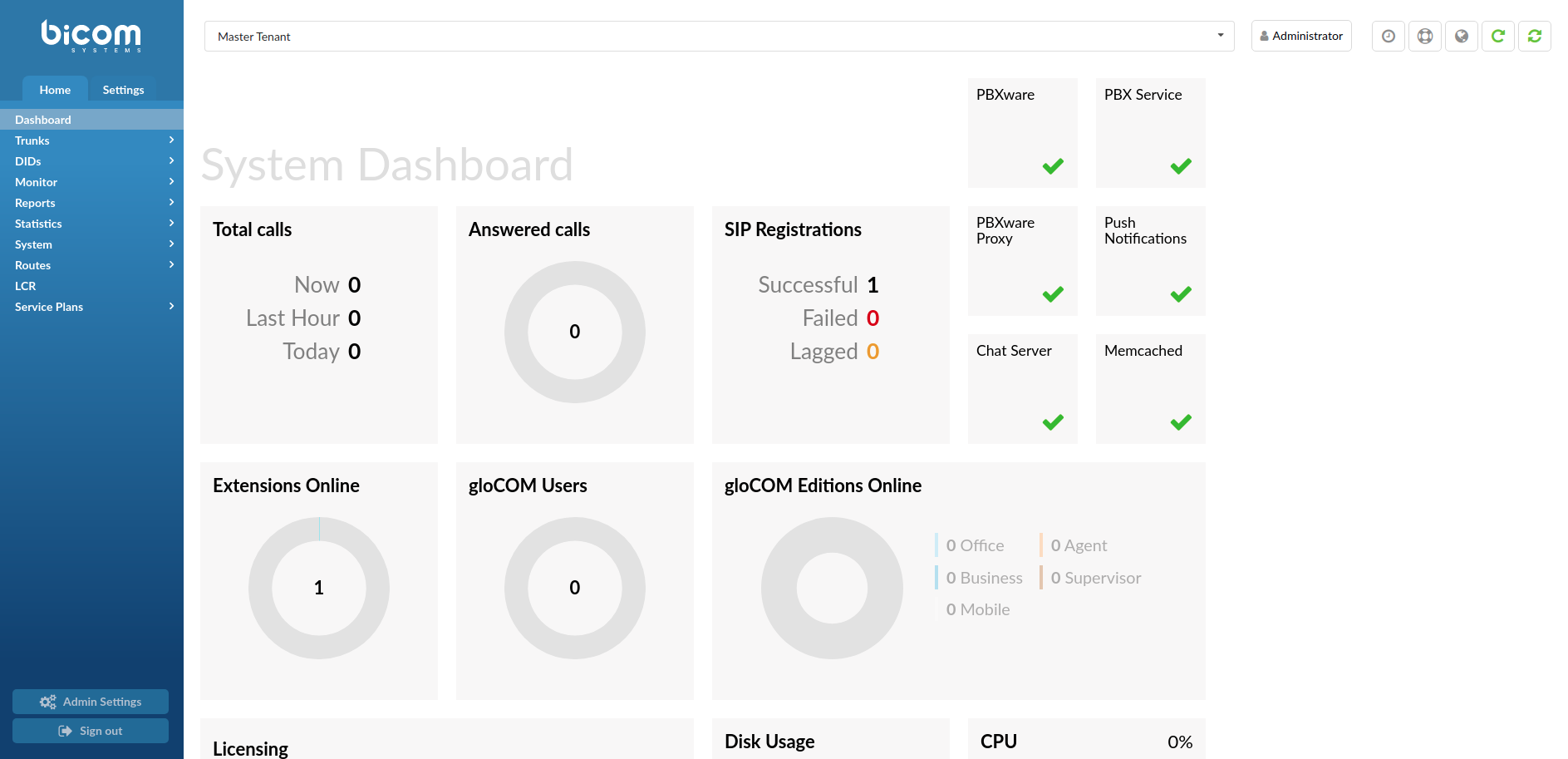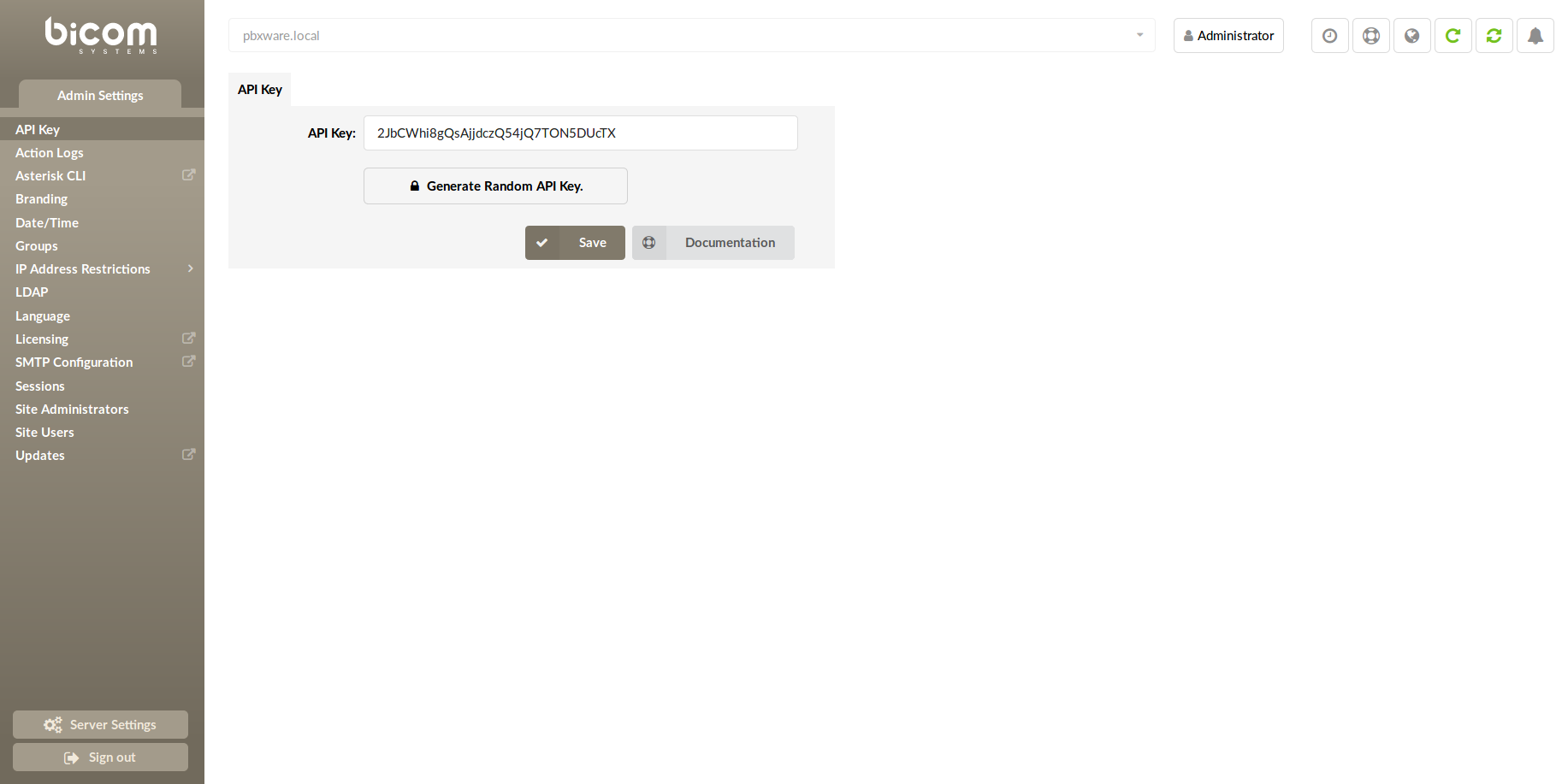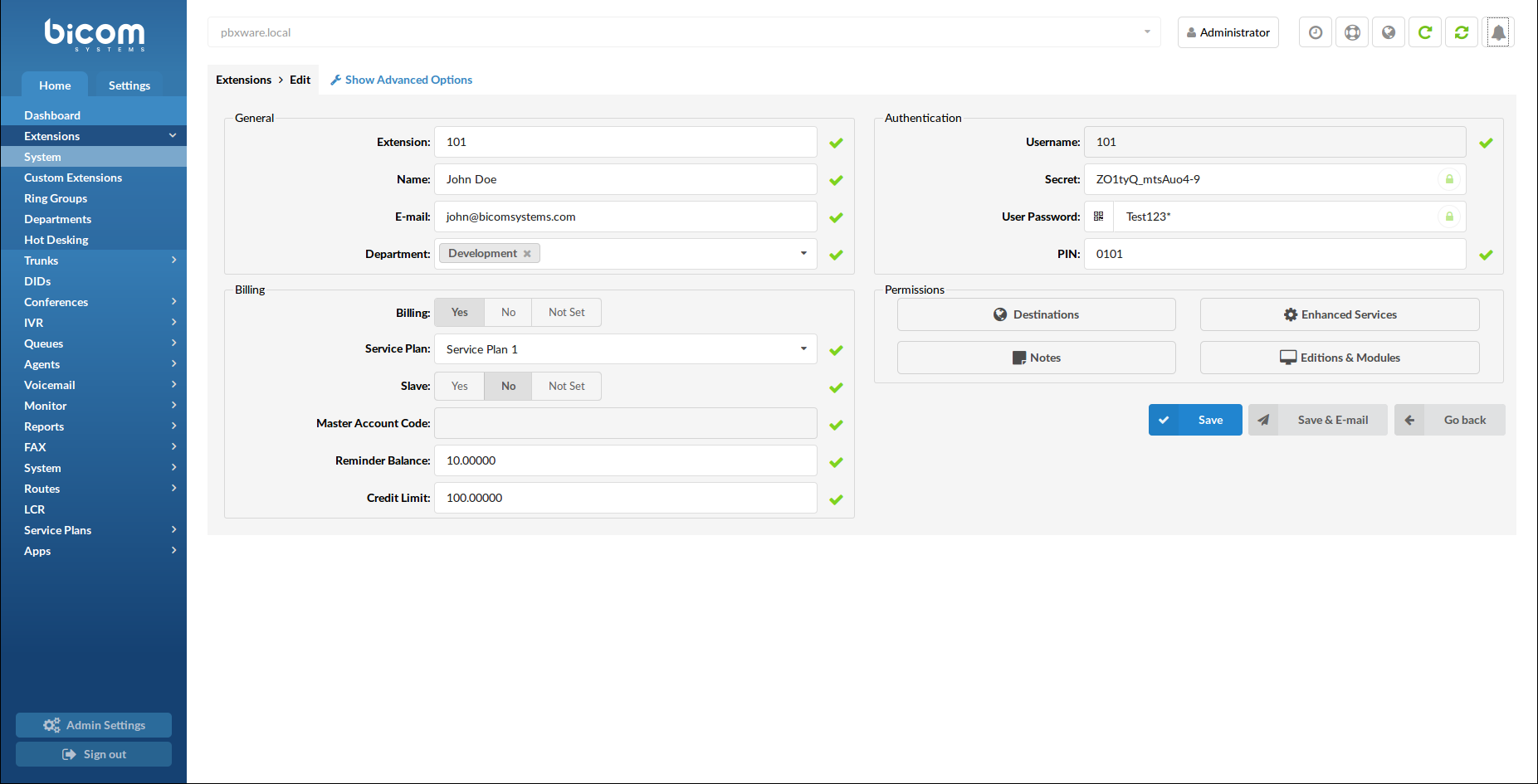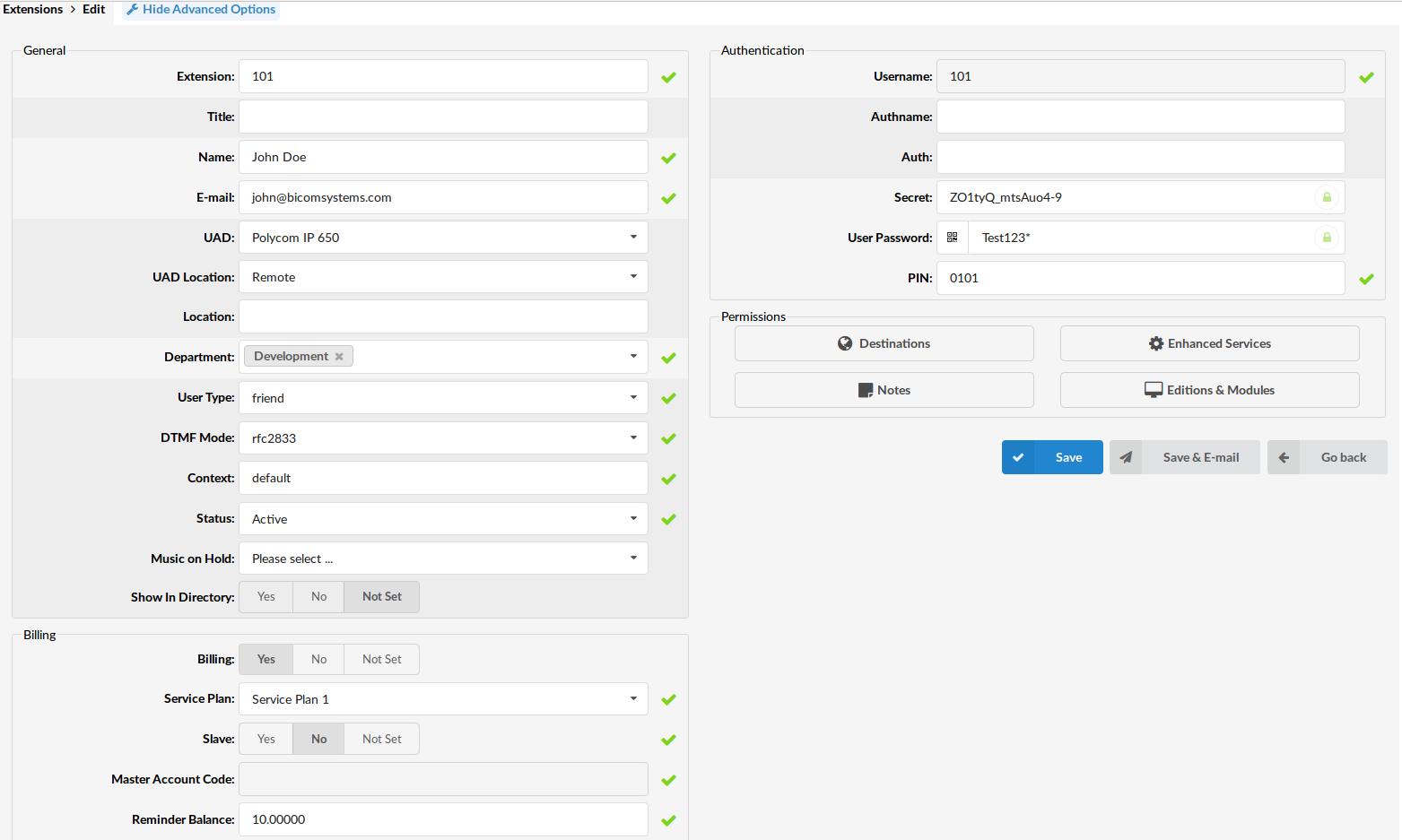¶ Administration Interface

PBXware MT Dashboard
The System Dashboard is a visual display of the most important indicators of a PBXware:
- Calls
- SIP Registrations
- Services
- Licencing
- Hardware Usage
- Tenant Menu

Tenant Selection Dropdown Menu is located on the top of the System Overview page, as a Dropdown Menu.
(If you are on the master tenant, you will have the ability to create/edit systems trunks and DIDs as part of master tenants control features.)
- PBXware MT menu
The PBXware MT menu is located on the left and displays all administration sections available, separated in two tabs:
- Home
- Settings
At the bottom of the left navigation menu is Log Out button and Admin Settings, which allows to modify various system settings in PBXware.
(Note: Depending on what you have selected in the Tenant Dropdown Menu, you will have a different choice of options in the left navigation menu. If one of the slave tenants is selected, you will control its PBX features which is part of slave tenants functionality as PBXes.)
- Action Menu

The action menu on the top right allows you to:
- Change password
- Set 2-step verification
- Change language
- Reload PBXware
- Restart PBXware
¶ Role Based Administration

System administration can be delegated to various users in order to perform role based administration. An unlimited number of users and groups can be created by system administrator(s). Each user will only have access to the sections of PBXware MT menus according to group membership permissions.
This is commonly used to allow management, operators, supervisors, etc access to the sections of the PBXware MT to which they have adequate knowledge and experience.
¶ Standard and Advanced Options
PBXware MT has been designed with simplicity and extensive configuration options as primary goals. In order to achieve both goals, administration has standard and advanced modes throughout all sections.
Standard Options

Standard mode is designed to allow an easy 'no brainer' method of administration as the level of configuration knowledge needed is based on common fields of information (Name, email address, etc.). This is possible to achieve since PBXware MT uses a powerful template system which pre-configures all advanced options leaving only common information values to be entered.
Advanced Options
Advanced mode options, on the other hand, require much better system knowledge in order to fine tune the system settings for various applications and usages. This manual tries to provide detailed information for advanced options. However, administrators should bear in mind that extensive training and hands on experience is required in order to be able to administer advanced sections effectively. For simplicity, all options available in the standard options are not repeated in this manual under the advanced options.
This manual tries to provide detailed information for advanced options. However, administrators should bear in mind that extensive training and hands on experience is required in order to be able to administer advanced sections effectively. For simplicity, all options available in the standard options are not repeated in this manual under the advanced options.